Suspended Solids Monitor – SoliSense®

SoliSense – Suspended Solids Sensor
Whatever level of suspended solids from 2 NTU all the way up to >8% solids, the SoliSense® is the solution. A sophisticated sensor that ranges from 2 NTU to 8% solids (in wastewater, up to 50% in other solids), this suspended solids monitor is the solution, and is unique in its ability to measure from low NTU to percent solids in one sensor.
Suitable for wastewater, potable water monitoring, mixed liquor suspended solids monitoring, return activated sludge, centrate monitoring, filtrate monitoring, sludge, and many more applications where a traditional turbidimeter or suspended solids analyser would be used. The suspended solids sensor can be fitted with an auto-cleaning function that blasts either water or air across the optical windows keeping them clean.
With the SoliSense® range of Suspended Solids monitors you get a world class sensor (patented).
Suspended Solids Monitor 3D View
Each SoliSense® suspended solids monitor is fitted with a light source and two detectors for making the measurements. Having two detectors, positioned at different distances from the light source, allows the sensor to be used over a wide range of suspended solids concentrations. The light source is a long life infra-red LED emitter (providing for 15 years working life). The detectors are matched photodiodes which are positioned to detect backscattered light, that is light that is scattered by >90°. By measuring back scattered light the sensor can be used to detect low and high concentrations of solids. This configuration allows accurate and reliable measurements of suspended solids concentrations and turbidity to be made.
Calibration of the SoliSense® for turbidity measurements or measurements of samples with low concentrations of solids is very easy, requiring a single calibration sample. This sample can either be a reading from another method, or a suitable standard. The analyser calibrates the sensor by a procedure that reduces the light output through four stages, taking measurements at each. This process provides an accurate and reliable zero and span without the requirement to use a ‘0’ NTU/solids sample.
Calibration of the SoliSense® for the measurement of samples with high concentrations of solids uses a multi-point calibration for the most accurate results. Up to 5 calibration points can be used to give an accurate performance across a wide range of sample concentrations.
The SoliSense® suspended solids analyser can be mounted on the end of a pole for dip mounting in a channel or tank, or inserted into a pipe via a valve which allows for retraction/removal of the sensor without shutting down the process.
- From 2 NTU to 8% Solids
- Displays in NTU, mg/l, g/l or % solids – flexible
- Auto-clean optical sensor – months without maintenance
- Stable and reliable – excellent process control
- Suitable for all potable, waste and process waters
- Up to 12 months between maintenance
- Up to 12 months between calibration
The SoliSense® suspended solids sensor is available with different controllers giving you the same great performance with different communication, display, and control options. With the SoliSense® range of online suspended solids analysers, you get everything that you need – and nothing that you don’t, without sacrificing the quality of measurement.
The use of a single sensor to robustly and accurately measure a large dynamic range of suspended solids allows for:
- Less spares – more commonality across a single or multiple sites
- No requirement to know the range prior to specifying – easier purchasing
- One online suspended solids analyser can be:
- Online mlss meter
- Online tss meter
- Online total suspended solids meter
- Online effluent monitor
- Online inlet monitor
- Online ‘in process’ suspended solids analyser
The SoliSense® suspended solids analyser has been designed specifically to be suitable for all wastewater applications.
- Inlet monitoring (turbidity 2-4,000 NTU)
- Effluent monitoring (suspended solids 0-1,000 mg/l)
Traditional monitoring applications where Pi tss monitors are particularly suited:
- Online Suspended Solids Analyser
- Online RAS meter (Return Activated Sludge)
- Online MLSS meter (Mixed Liquor Suspended Solids)
- Online WAS meter (Waste Activated Sludge)
- Thickened sludge – Online total suspended solids meter
- Centrate – Online total suspended solids meter
- Filtrate – Online total suspended solids meter
- Wastewater Effluent – Online total suspended solids meter
- Wastewater Influent – Online total suspended solids meter for turbidity
Each probe is equipped with a light source and 2 detectors. The light source is a long-life infra-red LED emitter (providing for 15 years working life).
By using two detectors in a single probe it is possible to:
- Measure turbidity from 2 NTU to 4,000 NTU
- Measure solids from 0.001 to 80 g/l (8% solids) – Sludge
- Measure solids from 0.001 to 500 g/l (50% solids) – Silicates
The electronics provide a fully scalable output allowing the SoliSense® to measure any part, or the whole of the scale. The sensor probe comes equipped with the capability of having a water jet regularly sweep over the optical lenses keeping them clean. If you have an application that ranges from low NTU all the way to %age solids then the SoliSense® is certainly the suspended solids monitor for you! With up to 5 calibration points you can accurately monitor your process across a wide range of sample concentrations.
The probes are constructed of 316 stainless steel with sapphire optical windows, so can withstand demanding operating environments. If you want to monitor solids at any point in your wastewater treatment plant, this instrument has the self cleaning sensor and accessories to do it, even if other instruments have failed.
Options on the SoliSense® include:
- Self-cleaning (recommended)
- Dip kit (for open tank installation)
- Flow cell (for at line installation)
- Insertion kit (for installation in a pipe)
Suspended solids are particles suspended in water. They occur naturally and can be seen for example in rivers after a rainfall event when the river appears ‘muddy’.
Water and wastewater treatment is largely about removing particles and organics, and then disinfecting water. Being able to measure suspended solids or turbidity can help in determining the best treatment, for example by measuring the suspended solids in the raw water coming in to a plant. Typically, suspended solids in waste water treatment has specific names such as MLSS (Mixed Liquor Suspended Solids) or RAS (Return Activated Sludge) etc. Measuring the suspended solids using an online suspended solids monitor around a wastewater treatment plant can provide vital information on the efficiency and efficacy of the treatment process.
Typically, suspended solids are measured in mass per volume units such as mg/l or mgl-1. Sometimes when the solids are quite high they will be measured in g/l or %.
Suspended solids is a ‘unit per volume measurement’ e.g. 1 mg of suspended solids in 1 litre of water. Turbidity is a measurement of ‘cloudiness’. Although each suspended material will have a different relationship (which will change over the range) a useful ‘rule of thumb’ is that 1 mg/L = 2 NTU although this can range from 1 mg/L = 0.5 NTU to 1 mg/L = 2 NTU.
Did you know Pi also manufacture and install a range of online Turbidity Analysers?
This depends entirely on how ‘optically clean’ the medium is. So, for example, if we are measuring sand (silica) in a clean water suspension we can measure up to 50% solids or 500,000 mg/l. If, however, we are measuring black sludge in a wastewater plant it may be as low as 5% or 50,000 mg/l. Typically, in most wastewater works it is 8% or 80,000 mg/l.
This depends entirely on how ‘optically clean’ the medium is. So, for example, if we are measuring sand (silica) in a clean water suspension we can measure up to 50% solids or 500,000 mg/l. If, however, we are measuring black sludge in a wastewater plant it may be as low as 5% or 50,000 mg/l. Typically, in most wastewater works it is 8% or 80,000 mg/l.
Each SoliSense® has temperature compensation built in so the effect of temperature on the online total suspended solids meter measurement is negligible. It should be noted though that the SoliSense® is a large mass that can take time to reach thermal equilibrium so any process where the temperature is changing rapidly >2°C per 10 min could see some temperature effect on the reading.
Focus Ons are a series of short articles distributed by email providing technical information regarding instrumentation, process measurement in potable, waste, process and pool waters. If you would like to join the mailing list, please contact us.
Optical measurements for Total Suspended Solids monitoring have been available for many years and are used in many water, waste water, and industrial settings. However, did you know that…
…the use of multiple path lengths can extend the range of optical sensors?
…the use of longer wavelength emitters can reduce the effect of colour on the readings?
…the use of multiple emitter intensities can mean that no zero is required and can eliminate the effect of background light (patented by Pi)?
Total Suspended Solids Monitoring (TSS)
TSS monitoring is essential for controlling many industrial processes, especially in Waste Water Treatment plants when an understanding of the solids load and solids movement around the plant is essential to efficient plant outcomes.
The standard method of gravimetric sampling (passing a known volume of TSS containing water through a filter, then drying the filter and measuring the weight gain to give a measure of mass/volume – TSS) is slow and cumbersome and subject to errors, e.g. sampling errors. What is needed is a device that can measure the TSS continuously and online.
The most common devices are based on the measurement of the optical properties of the sample, commonly backscatter.
Multiple path lengths for the greatest range
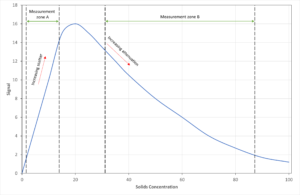 There are some fundamental problems with using backscatter to measure TSS. The first is the range that a sensor can measure over. This is largely determined by the path length of the sensor. The longer the path length, the greater the sensitivity but the smaller the range.
There are some fundamental problems with using backscatter to measure TSS. The first is the range that a sensor can measure over. This is largely determined by the path length of the sensor. The longer the path length, the greater the sensitivity but the smaller the range.
This is because as solids increase, the backscatter (signal) increases but so does the attenuation (blocking) of the light until their effect is equal (the ‘hump’) after which attenuation increases until the signal is zero.
This means that a meaningful measure of TSS can be made going up the slope (measurement zone A) and going down the slope (measurement zone B). The problem with this is that the different samples will have a ‘hump’ where measurements aren’t possible in different places.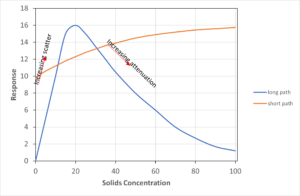 For most manufacturers, the solution is to quite tightly define the range at which the sensor can operate. Pi’s SoliSense®s uses two detectors of different path lengths to measure the widest possible range of TSS in a single sensor.
For most manufacturers, the solution is to quite tightly define the range at which the sensor can operate. Pi’s SoliSense®s uses two detectors of different path lengths to measure the widest possible range of TSS in a single sensor.
Using long wavelength emitters decreases the effect of colour
Devices that use shorter wavelengths (blue, green, white) are more affected by the absorption of those wavelengths by the solids in the sample. Effectively some of the signal is lost to absorption rather than being available to scatter. The SoliSense® uses an emitter at 860nm to minimise the absorption of the emitted light left to sample.
Using multiple emitter intensities allows for no zero, and the elimination of the effects of ambient light
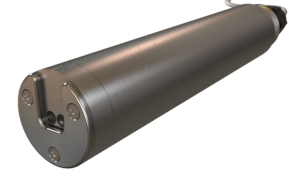 Each time the SoliSense® takes a measurement it isn’t simply measuring the amount of backscattered light (which includes an element of ambient light). It changes the amount of light emitted to 25%, 50%, 75% and 100%. From there it records a gradient for each sample point. As it does this very quickly it can be assumed that the ambient light is constant and is therefore absent from the gradient (compensated out). In addition, doing this during a calibration allows the SoliSense® to back calibrate any zero offsets and remove these. This capability is patented by Pi and is unique in the marketplace.
Each time the SoliSense® takes a measurement it isn’t simply measuring the amount of backscattered light (which includes an element of ambient light). It changes the amount of light emitted to 25%, 50%, 75% and 100%. From there it records a gradient for each sample point. As it does this very quickly it can be assumed that the ambient light is constant and is therefore absent from the gradient (compensated out). In addition, doing this during a calibration allows the SoliSense® to back calibrate any zero offsets and remove these. This capability is patented by Pi and is unique in the marketplace.
Conclusion
The SoliSense® from Pi uses patented technology to
- give the widest range of any currently available optically based TSS sensor
- minimises the effect of colour on the measurement of TSS
- compensates for zero drift and ambient light.
All of which means that the SoliSense® is an extremely effective technology for continuously measuring Total Suspended Solids in industrial and municipal waste water treatment plants.
Sensor Fouling
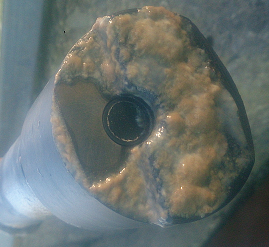 Whatever the process being monitored, there is often something in the sample water capable of fouling a sensor, and therefore causing erroneous results. The obvious solution to this problem is to clean the sensor, but how frequent should inspection and cleaning programs be for each piece of instrumentation? Too frequent and the inspection and cleaning regimen is time consuming and unnecessarily costly. Not often enough and the instrumentation will give false results and possibly fail prematurely.
Whatever the process being monitored, there is often something in the sample water capable of fouling a sensor, and therefore causing erroneous results. The obvious solution to this problem is to clean the sensor, but how frequent should inspection and cleaning programs be for each piece of instrumentation? Too frequent and the inspection and cleaning regimen is time consuming and unnecessarily costly. Not often enough and the instrumentation will give false results and possibly fail prematurely.
What is the solution?
Process Instruments’ AutoClean and AutoFlush Systems
Simple, reliable and easy to maintain, Process Instruments’ AutoClean/AutoFlush systems are an alternative to mechanical cleaning mechanisms which can clog and break. By frequently spraying the sensor/probe with clean water or air, the sensor remains clean and free from fouling for extended periods of time. The sensor cleaning cycle is activated by Pi’s controller for a user selectable length of time and frequency so that no matter how dirty the application, the probe remains clean. With no moving parts in the sensor body or in the cleaning attachment there is nothing to replace or check other than a simple valve positioned in an easy to reach location.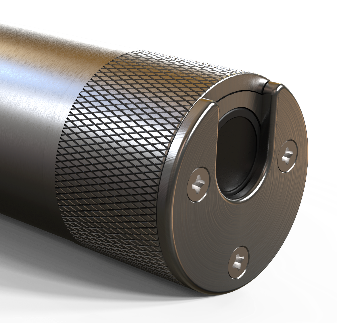 Pi’s AutoClean and AutoFlush systems can give trouble free and fouling free functioning of sensors for weeks, if not months, at a time.
Pi’s AutoClean and AutoFlush systems can give trouble free and fouling free functioning of sensors for weeks, if not months, at a time.
A solution for each application
AutoClean
This option can be added to our pH, ORP, Turbidity, Suspended Solids and Dissolved Oxygen (DO) sensors. Consisting of an end cap to direct the flow of clean water (or air for a DO sensor) across the face of the sensor blasting any dirt away. The cleaning is controlled by a single valve positioned in an easily accessible location.AutoVerify
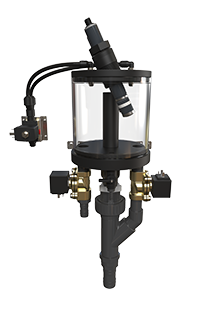 If using air to clean a DO sensor the system can also automatically verify that the sensor is still responding correctly, removing any need to remove the sensor from the sample for months at a time.
If using air to clean a DO sensor the system can also automatically verify that the sensor is still responding correctly, removing any need to remove the sensor from the sample for months at a time.
AutoFlush
For sensors that require flow cell mounting like Chlorine, Ozone and Chlorine Dioxide, an Autoflush system has inbuilt valves which automatically start/stop the sample flow and control the flow of clean water past the probe. The user can set the flushing interval and duration to keep the flow cell and sensor clear from fouling. For particularly dirty or stubborn contaminants, warm water can be used as the flush water to aid cleaning. With the above options, whatever the application or parameter being measured, Process Instruments will be able to provide a monitoring system that will not only be accurate, precise and long lasting but that will also remain free from fouling and save the operator both time and money.| Document | Type | Size |
|---|---|---|
| SoliSense® | Brochure | 680kB |
| Total Suspended Solids Measurement – SoliSense® | Article | 592kB |
| Measurement of Suspended Solids | Technical Note | 742kB |
| SoliSense® for TSS Monitoring | Technical Note | 753kB |
| SoliSense® Mounting Options | Technical Note | 686kB |
| Probe Fouling | Technical Note | 459kB |
"We at Scottish Water have been using the excellent Pi LabSense 3 and portable UV254 instruments in the field for optimizing our Water Treatment processes for some years now. We find them easy to use and invaluable for detecting and resolving issues in a timely, efficient and effective manner. Two great pieces of kit!”
Paul Weir
Scottish Water - UK
"I want to thank you and all at Process Instruments for all the assistance, information and handholding during the year. The help that was so freely given was very much appreciated. Can you please extend my appreciation to all at Pi and let me wish you all a happy, safe and wonderful Christmas and I look forward to working with you again in 2021."
Michael Bailey
Wexford Co. Co. - Ireland
"Excellent level of support and always so much more prompt than a lot of our suppliers."
Phill Tuxford
Detectronic - UK
"The plant can’t produce good quality water without the CoagSense."
Mick Murphy
Wexford Co. Co. - Ireland
"We've used the CRIUS® with chlorine, pH and conductivity sensors for several years and confirm quality, performance and reliability has been wholly satisfactory to date."
David Kerr
Karis Technical Services Ltd. - UK
"We in ECM ECO Monitoring can only recommend Process Instruments products and services to all other potential clients. They have very complex portfolio of products for water quality monitoring in various types of industries, friendly attitude, very quick delivery time and prompt reaction to all our needs and inquires. Our clients especially appreciate the particle counters and sizers allowing identification of drinking water treatment problems. The Streaming Current Monitors are a great tool for optimisation of expensive chemicals.”
Branislav
ECM ECO Monitoring - Slovakia
"Simply the best turbidity available."
John Clark
Chemtrac - Atlanta, GA
"In 2019, we purchased 29 particle counters which were installed in our water plants. So far, their performance has been perfect."
Li Yongjun
Jinan Hongquan Water Company - China
"We have installed hundreds of ozone analyzers from Pi over the years. They are just accurate, reliable and require low maintenance."
Jiao Tumei
Qingdao Guolin Environmental Technology Co., Ltd., - China
"Over the last few years we've purchased chlorine and turbidity analyzers from Chemtrac and with routine calibration the probes measure the chlorine and turbidity without any issue. We are very happy with this product and would highly recommend them."
Daniel "Buck" Owen
Ocoee Utility District - Ocoee TN
"We've been using these analyzers since 2008. They're easy to use and very stable. Calibration and maintenance is quick and simple."
Lloyd Gruginski
Chehalis WTP - Chehalis, WA
"The Pi products provide excellent value for money and represent the best municipal drinking water analyzers available."
John Clark
Chemtrac - Atlanta
“Servicing customers is much more than just solving problems or addressing complaints and Pi does that very competently with technical and quick efforts providing a good experience."
Clovis Tuchapski
Buckman - Latin America
"Pi's technical team has enabled us to be one step ahead of our competitors by adding value to our projects thanks to their fast and excellent support from the moment you first reach out.
Ibrahim Kaplin
Thermomed - Turkey
"Going from ORP control to amperometric chlorine sensor control has undoubtedly improved the pool water immensely!"
Chris Tedeschi
Link Automation - USA
"The Streaming Current Monitor from Pi is the best SCM I have ever used. The analyser responds quickly and has many powerful functions, which helps me save a lot of money."
Ye Yancong
Xiamen Xishan Water Plant - China
“Process Instruments has a broad range of high quality and user-friendly solutions for water-industry problems. The short lead times and great customer support make Pi a reliable partner.”
Péter Szabó
SC KATALIN NOHSE CHIMIST IMPORT SRL - Romania
"Process Instruments UK always have a high level of customer service. All our interactions with Pi have exceeded our expectations. It is always a pleasure working with you.”
Iñaki Seisdedos Rodríguez
Izasa Scientific - Spain
"The support from Pi and its partners is superb. They go above and beyond to ensure that, not only is their equipment perfect but that the process is working great too. Five Stars!"
Anthony Glitto
Equip Solutions - Illinois, USA
"Process Instruments UK always have a high level of customer service. All our interactions with Pi have exceeded our expectations. It is always a pleasure working with you.”
Rudi Tuffek
Allpronix - South Africa



